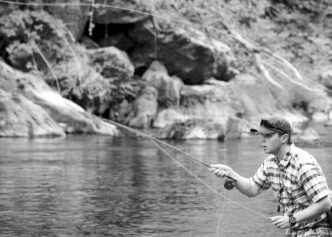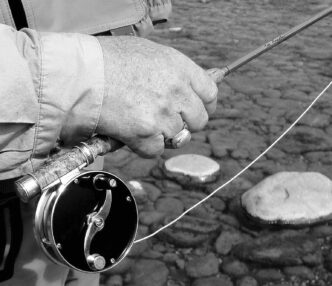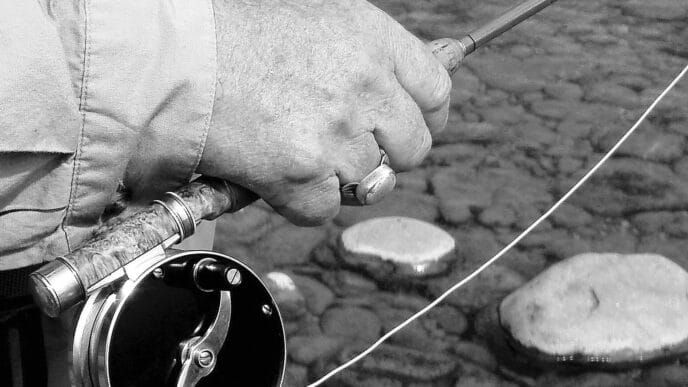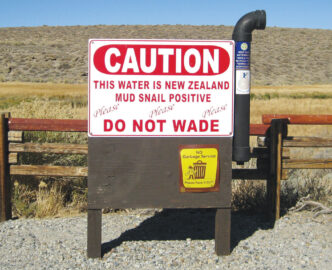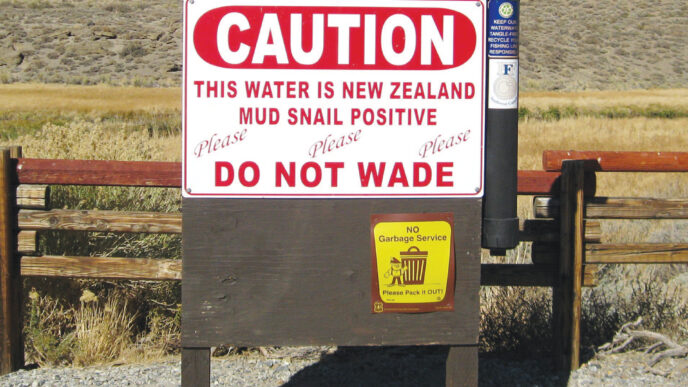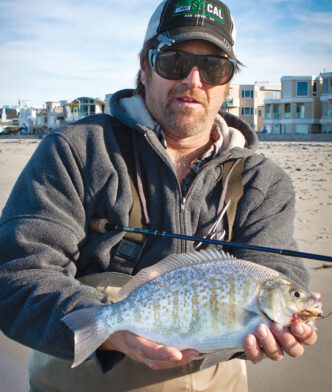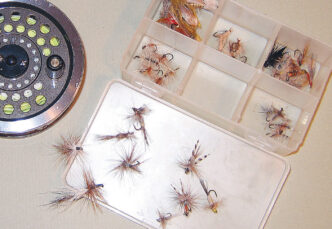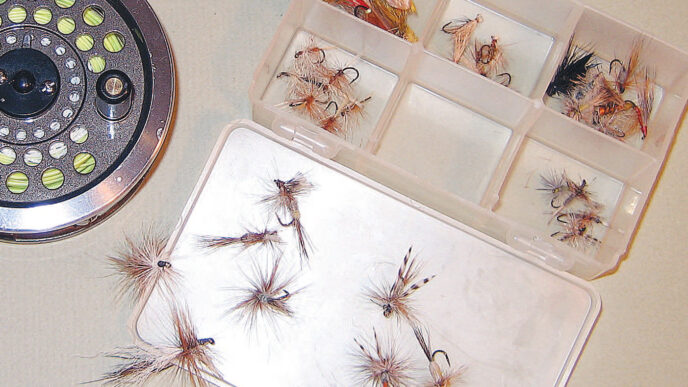Editor’s note: Gearhead columnist Larry Kenney is working on a story highlighting new fly-fishing products that were unveiled at this summer’s International Fly Tackle Dealer show. It will appear in our next issue. As a counterbalance, Jim Zech gives us an insider’s perspective on an intriguing trend in tackle preferences: the use of “dated” gear.
In commemoration of the twentieth anniversary of the first issue of California Fly Fisher, I would like to say a few words about mountain biking. I got my start as a professional fly fisher just a few years after I got my start as an amateur mountain biker, which was way back in the early 1980s — back when listening to REM got you labeled an artistic outsider punk-assed college dork, and the Rolling Stones were only middle-aged. Way back then in mountain biking, there was steel. Frames were made of steel, forks were made of steel, and so better be your ass, because suspension of any kind didn’t exist. Helmets? Pfft! Craniums were for cracking. Lycra? Pfft! Levis were tougher and didn’t make you a target of ridicule, even if they made you a target of some serious nether-region chafing. Clipless pedals? Be serious. You rode in tennis shoes, or even boots! There was an industry supporting the sport, but it occupied a pretty small and ill-considered corner of your local bike shop. And you know what? It was a freekin’ crazy-fun blast.
In the years that have flown by like Tom Ritchey bombing a Schwinn down Mount Tam, mountain biking has gotten big — big, and technologically sophisticated, and complex, and seriously expensive. But in the last few years, there have appeared on the dirt trails some new (old) bikes and some hard-core riders having a freekin’ blast riding them. These bikes are again made of steel. They have one gear, one speed — no shifters, no derailleurs. They don’t have a rear suspension and often have only solid, nonsuspension forks in front. These bikes are as simple as can be.
Which brings us to the current state of fly fishing on this twentieth anniversary of the premier California flyfishing publication of record. To establish my bona fides concerning this subject: In the last twenty years, I’ve been a fly-fishing guide, behind-thecounter fly-shop grunt, flyshop manager, fly-shop owner, fly-shop manager again, manufacturer’s sales representative, odd-jobber, fish bum — well, you get it, right?
Fly fishing in the last twenty-plus years or so has erupted from a small hobby occupying an ill-considered corner of your average sporting goods store to a technologically sophisticated industry meriting its own specialty shops.
And when it comes to flyfishing gear, it is all available to you in great big, expensive, technologically advanced spadefuls. You can buy stuff to keep you dry in the water that was first developed to keep astronauts’ blood from boiling and their eyeballs from popping out of their sockets in outer space. You can buy fly rods made of carbon composites that would make Kelly Johnson of the Lockheed Skunk Works of yore — the operation that came up with the U-2, the SR-71, and the Stealth Fighter — drool with materials envy. We have fly treatments that employ cutting-edge nanotechnology that will keep your fly floating in a Katrina-sized storm of fish spit. We can even use military satellites to map out our fishing spots and just to about tell us which the most effective direction to cast in would be. We’ve got fly lines that can sink so hard as to take down a jet ski, and then we have lines that can float so vigorously that they can bring that same jet ski back to the surface, although most of us fly anglers would probably chose not to do that last thing.
And I’m all for all of this. For one thing and for the sake of honest disclosure, I make a living (sort of ) selling this technologically advanced gear. Just as my ass is forever grateful for the soft ride of my full suspension bike, my arm is grateful for the long and extremely lightweight fly rod I can use when I choose to fish nymphs with an indicator or fish with any other technique where I have to hold my rod high for an extended period. And I’m happy to have a line that can bring my canary colored Intruder down deep to where the steelhead lurk in a storm-swollen Eel.
But behind all of this marvelous technology that we have developed in the last few decades to help us catch fish on a fly is an emerging cadre of hard-core fly anglers rediscovering the fun of dry-fly fishing with a fiberglass or cane rod and a click pawl reel, or even no reel at all. Also there are quiet hot-rod Spey anglers eschewing the chubby Skagit line and heavy tungsten winter tip (or, gasp, indicator) for the elegance of a thinner-taper line, simple long mono leader, and classic bright fly swung through the sparkle of a fall riffle. This gear is as simple as can be, and the anglers using it are as hard-core and serious as can be and are having a freekin’ blast.
You might suspect that this new retrospective attitude is a consequence of our “new normal,” the harder-than-it-once-was economic situation we currently find ourselves enjoying, but I don’t think so. Many single-speed bikers are getting their old-school steel frames custom made by boutique welding shops, and many of the hard-core anglers getting in touch with their simpler side are choosing to do so with cane rods. Neither of these artistic constructions is cheap. The new economy may be the impetus for looking back to when times were simpler, but that nostalgic urge isn’t really driven by economics. What the hard cores are seeking, in my opinion, is the essential nature of their sports, the essence of recklessly flying a bike down a rough trail and the essence of elegantly casting a light fly to a wary fish in thin water. And in finding this essence, this nugget of the sport, the “hard core” of the sport, if you will, they find and remember what made it such a freekin’ blast in the first place. This is what I see and what I choose to see when I view the state of fly fishing at this momentous and significant anniversary in California fly fishing: mountain biking on a single-speed bike. Not all of the time. Not on every trail. But when and where you can, it is a freekin’ blast.



